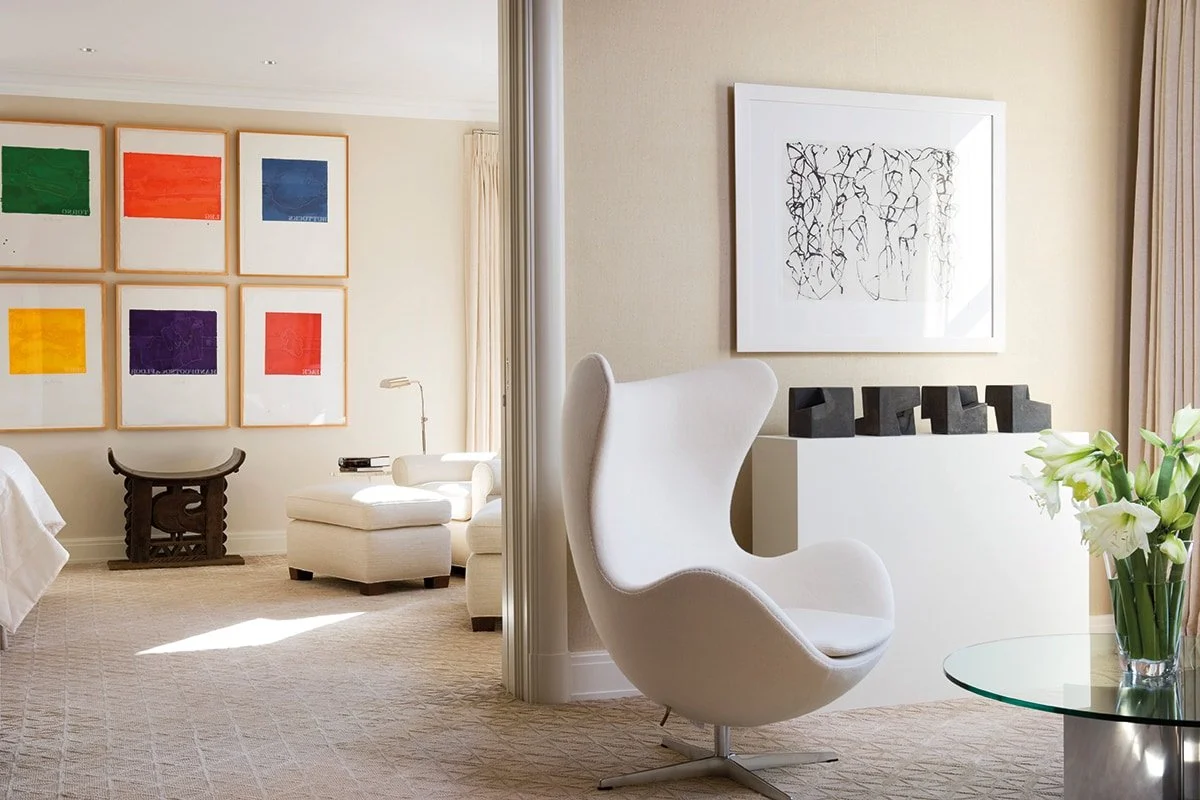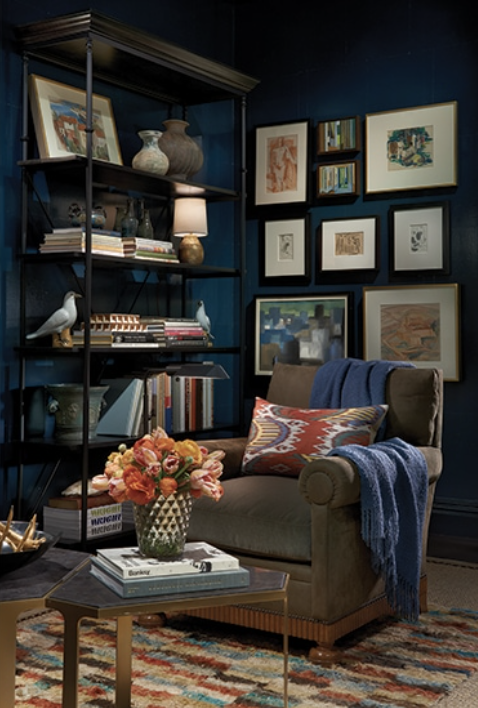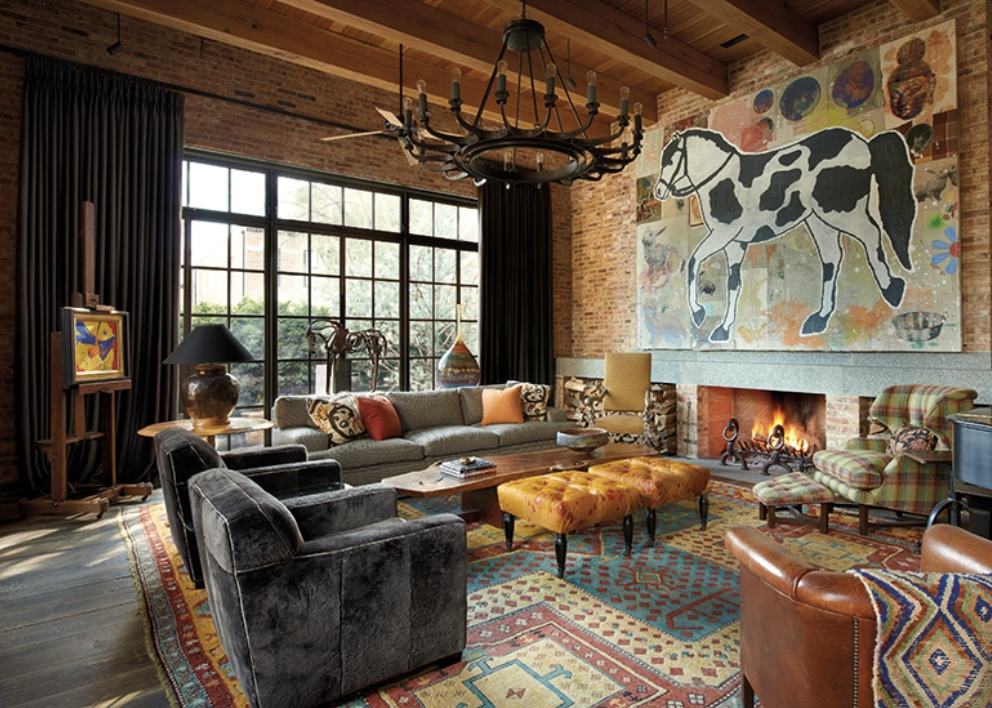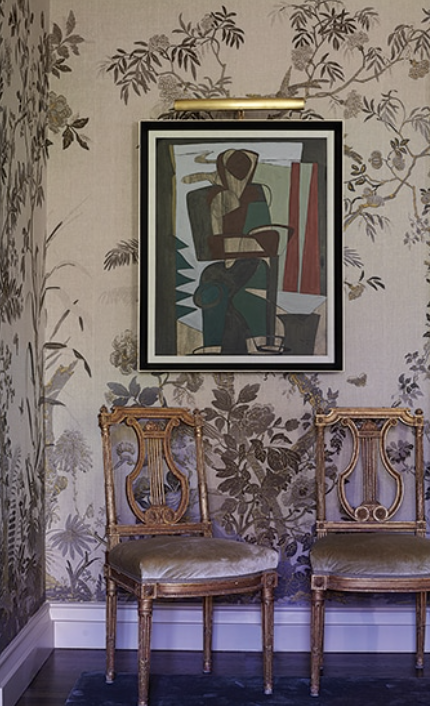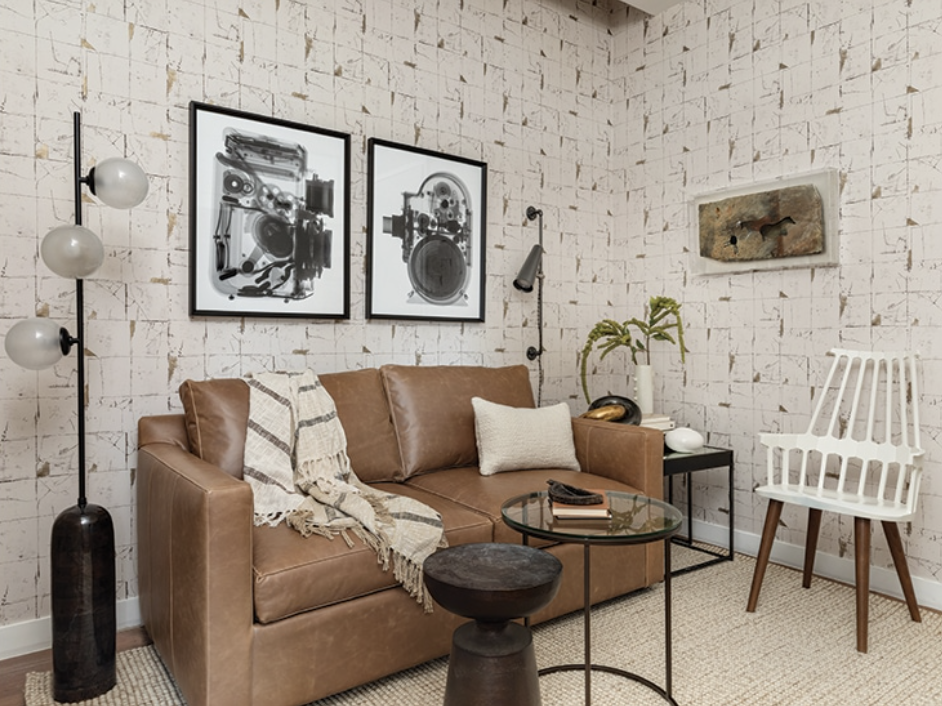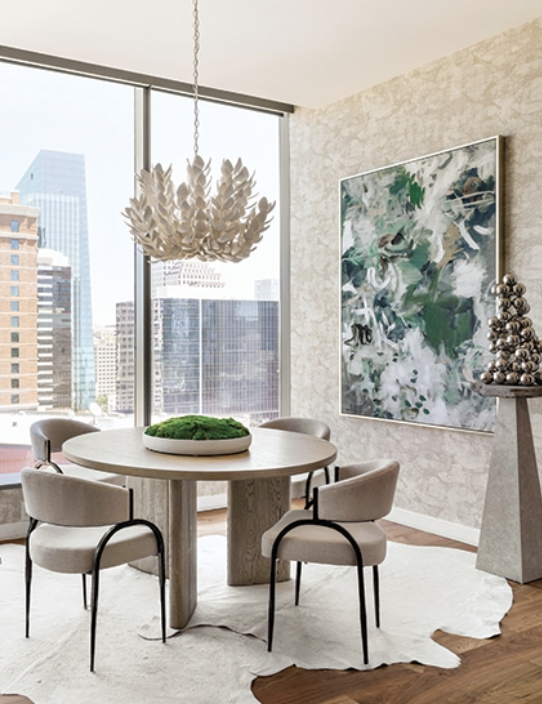Design Chicago
Written by Paul Hagen
Photography by Hedrich-Blessing Photographers
Link to Article
DECORATING WITH ART? THIS IS THE ADVICE YOU NEED
Art can be an essential part of interior design. But, whether you’re shaping space to suit a collection or searching for finishing touches, the possibilities may feel overwhelming. So we turned to the professionals at Richard Norton Gallery—and some of the talented designers with whom they’ve worked—for advice.
“Artwork choices should come from the heart,” reminds gallery director Susan Klein. “In my perfect world, clients would choose the artwork first and build a room around it.” Designer Alida Coury concurs. “Sometimes it’s much easier to start with a specific piece of artwork from the client. So, you are working an entire room from the beginning knowing the colors, style, and time period.” But designer Bruce Fox notes client choices can present challenges, as well. “Big walls and small art can create design dilemmas,” he says. “And the inverse is also true.”
On the other end of the spectrum, notes designer Jessica Lagrange, “There are projects where we use art as the final layering phase.”
When to Think about Decorating with Art
“Complementing a space with art is usually how I work in my design process,” Coury says. “I like to let the architectural details, finishes, lighting, and the furniture be the key players.”
Fox finds that selecting art while designing can help. “I don’t believe that art needs to match the decorating,” he says, “but furnishing choices can ensure decorating doesn’t get in the way of great art.”
“Always choose original artwork—an original Midcentury painting created in the 1950s or 1960s—as opposed to a Midcentury-style painting created last year.”
—Richard Norton
And when it comes to great art, gallery owner Richard Norton has this recommendation: “Always choose original artwork,” he suggests, “an original Midcentury painting created in the 1950s or 1960s—as opposed to a Midcentury-style painting created last year.”
Displaying that art correctly involves more than hanging it level. “We often like to create salon-style arrangements with interesting groupings of artwork,” Klein shares. Fox enjoys letting certain pieces stand out.
“I personally love a sculpture or anything three-dimensional on a pedestal,” he says. “I use them as focal points in long vistas or a pair to frame wall art, even in the space between two windows.” Coury says, “I also like to play up art in bookcases and on coffee tables, consoles, or counters.”
What Else Functions as a Frame?
When it comes to color, Fox suggests various strategies—from matching to contrasting to power clashing—can be successful. “I remember hanging a huge blue Ellsworth Kelly over a dining table, and although the walls, rugs, and draperies were neutral, we decided to make the dining chair seats apple green,” he says. “The pop of color combination made the composition dynamic.” Coury notes that even black-and-white art can lend helpful contrast to space “that needs some breaks of light so that it does not become a depressing cave.”
Fox notes that wallcoverings will be another way your art is framed. He appreciates how neutral walls allow pieces to pop but desires depth. “I appreciate textured surfaces—brick, wood, plaster,” he says. “I recently hung several pieces on my own walls in Michigan which are skim-coated with Japanese clay. The look is perfection.”
But what if you have already settled on a wallcovering that’s not so neutral? “Once you have art against a pattern, you have to balance the movement,” notes Coury. “You don’t want the pattern to fight the art.”
According to Fox, it is also important to consider how a piece complements the architecture of a room. “A large sculpture often looks wonderful balanced by a dramatic staircase or other architectural feature,” he explains.
How Working with a Gallery Helps When Decorating with Art
And there is additional context to take into account. “It is important to consider all factors—of traffic, positioning, exposure to heat and sun,” adds Coury. “If we have active children or pets in the home, we cannot place a pedestal with a fragile sculpture where it can get knocked over. Working with an experienced art gallery like Richard Norton will help guide you in all those important factors.”
Lagrange has also found Richard Norton Gallery an invaluable resource. “I have had the pleasure of seeing Richard grow from having a small space in his father’s highly regarded antique shop at theMART to his very own, highly respected art gallery,” she says. “Richard is an amazing dealer,” adds Fox. “I always find something truly wonderful when I’m there.”
“We can find a single painting for a project or even assist in curating an entire collection,” says Klein. And Norton reminds us that art may stay with you longer than any one design. “In 20 years’ time, your sofa might go to Goodwill, but your artwork can move with you to your new home, can be passed down to your children, or perhaps even sold, often at a profit,” he says.

